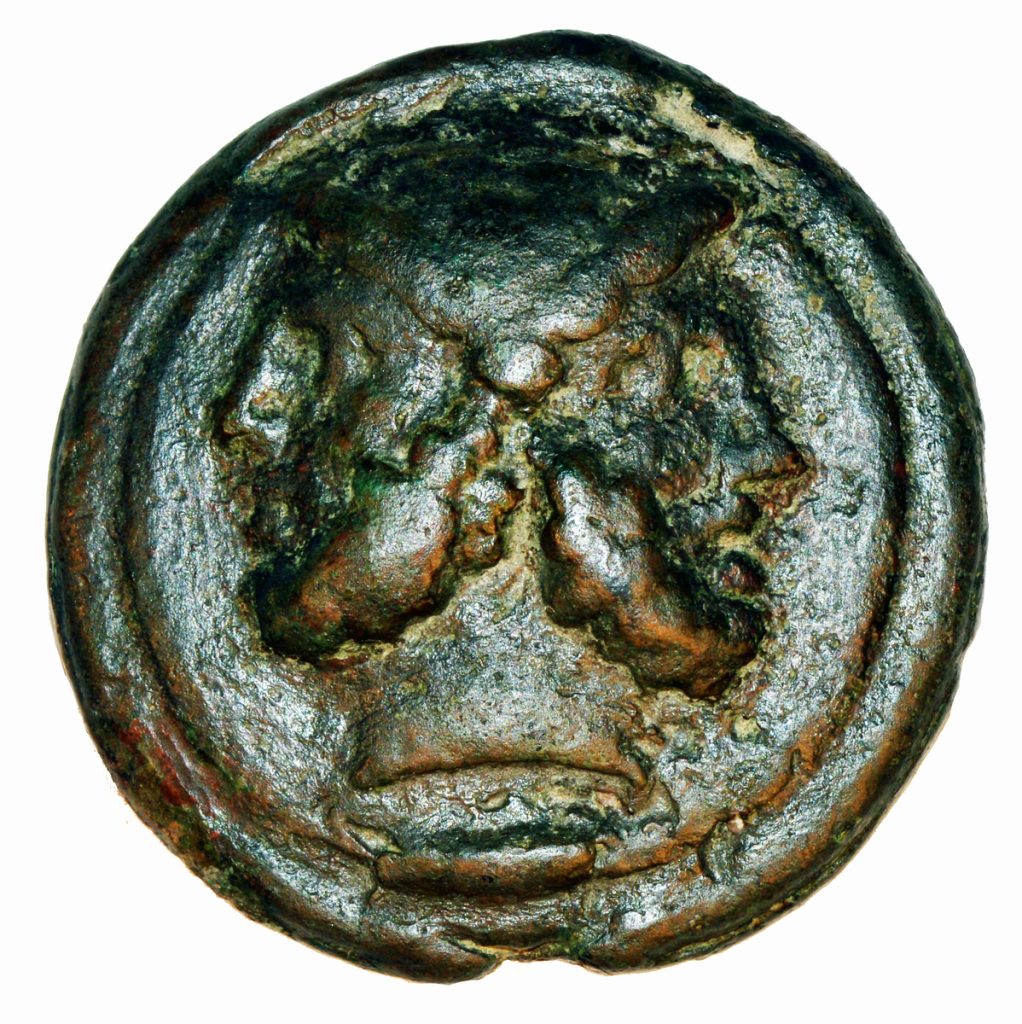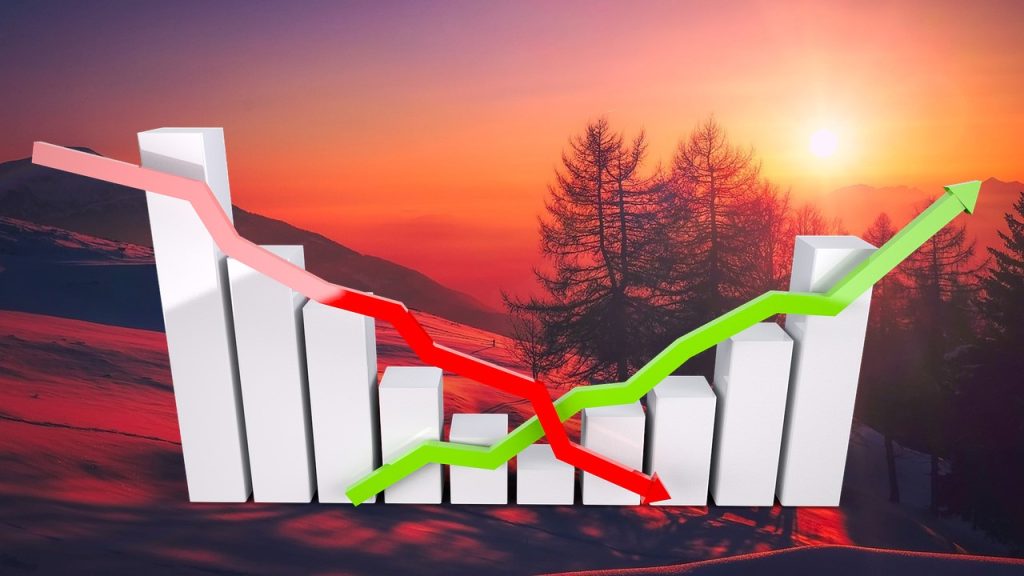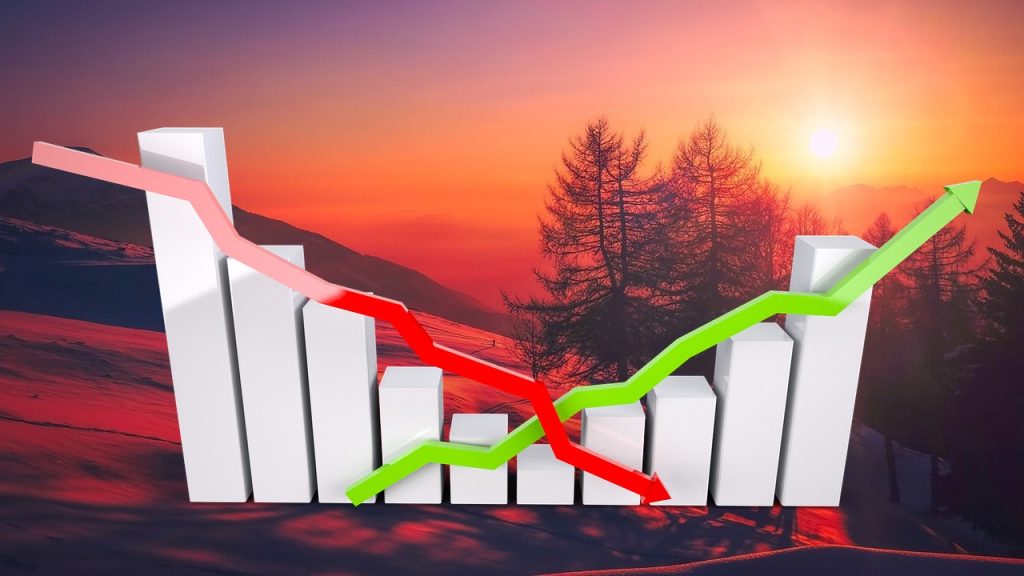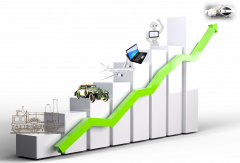Kari Lilja, TkT, Erikoistutkija; Sirpa Sandelin, TkT, Yliopettaja
English version: Click the link
Tammikuu on puolivälissä ja vuosi 2024 aluillaan. Vuosiluvun kirjoittamisessa on oltava tarkkana, sillä mennyt vuosi tulee vielä selkäytimestä. Tammikuu on monessakin mielessä kaksijakoinen kuukausi. Mennyt vuosi kummittelee vielä mielessä, ellei muuten, niin viranomaisten vaatimuksesta. On tehtävä veroilmoitukset ja yritysten ja yrittäjien lisäksi tilinpäätökset, vuosi-ilmoitukset ja vastaavat. Samaan aikaan on suunnattava katseet uuteen vuoteen, tulevaan kevääseen, kesään ja syksyyn. Ennakoitava tulevaa ja suunniteltava toimintaa.
Tammikuun nimi useilla kielillä (January tms.) viittaakin roomalaisten kaksikasvoiseen jumalaan, Janukseen, jonka toiset kasvot katsovat eteen ja toiset taakse.

Paitsi mennyttä vuotta olen vuodenvaihteen molemmin puolin katsonut hieman kauemmas taaksepäin ja tarkastellut Suomen lähihistorian kolmea merkittävää kautta, 1980-luvun lopun kasinohuumaa, sitä seurannutta 1990-luvun alun lamaa ja uutta nousua, yhden noiden aikakausien tunnetuimman tekijän, näkijän ja kokijan, Björn Wahlroosin kautta. Hänen muistelmiensa toinen osa kun ilmestyi juuri ennen joulua. Itselleni asian tekee mielenkiintoiseksi se, että olin monen hänen mainitsemansa yrityksen kanssa tekemisissä juuri noihin aikoihin välillisesti tai välittömästi työni, työnantajani ja toimeksiantajieni kautta.
Wahlroosin muistelmat tekee ainutlaatuisiksi paitsi se, että hän on ollut tapahtumien sisäpiirissä ja osallistunut moniin tuolloin ja vielä kauan jälkeenpäinkin huomiota herättäneisiin tapahtumaketjuihin, myös ja oikeastaan ennen kaikkea hänen viileä, lähestulkoon tutkimusraporttia muistuttava tyylinsä ja tapansa kertoa tapahtumista ja taustoittaa niitä myös henkilökuvauksilla. Asiat, joista julkisuudessa näki vain pintaraapaisun, saavat syvemmän taustan, aina tapahtumiin osallistuneiden henkilökuvauksia myöten. Tämä tekee mahdolliseksi myös syvemmän analyysin, jossa voi tarkastella erilaisten henkilökohtaisten ominaisuuksien ja luonteenpiirteiden, organisaatiokulttuurien ja tehtyjen toimien yhteisvaikutusta yrityksen, organisaation tai liiketoimen tulevaisuuteen.
Vaikka, arvopaperimarkkinoijan sanoin, historiallinen kehitys ei anna takuuta tulevaisuuden kehityksestä, historiasta voi silti ottaa oppia. Itselleni ainakin tuli selväksi, että poikkeuksellisen ekstrovertti ja arrogantti eli ulospäin suuntautunut ja ylimielinen henkilö yritysjohtajana voi olla melkoinen riski omistajille ja liikekumppaneille. Vähintään hän pitää niin suurta ääntä itsestään ja erinomaisista ideoistaan, että muiden viestit eivät pääse perille, ja vaikka pääsisivätkin, jäävät noteeraamatta. Toki 90-luvun lamaan, 2000-luvun alun IT-kuplaan ja myöhempään rahoituskriisiin oli kaikkiin myös isompia kansallisia tai kansainvälisiä syitä.
Yksittäisen yrityksen kannalta suurin riski näyttää kuitenkin liittyvän siihen, miten hyvin tai huonosti johto kuuntelee muita, kenties omiinsa nähden vastakkaisia mielipiteitä, analysoi niitä ja ottaa lopullisia ratkaisuja tehdessään mahdollisimman monipuolisesti huomioon asiaan vaikuttavia tekijöitä.

Menneessä vuodessa oli paljon hyvää. Hankkeet etenivät ja uusia hankkeita saatiin. Elämä alkoi koronavuosien jälkeen normalisoitua, mikä ei suinkaan tarkoita ennalleen palaamista. Etätyöt, varovainen suhtautuminen matkustamiseen ja takaraivossa muhiva kysymys ”Entä jos Ukrainan sota eskaloituu” kuuluvat ilmeisesti luonnollisina osina uuteen normaaliin, samoin kuin epävarmuus huomisen sähkön hinnasta. Alkaneen vuoden osalta yksi polttavista kysymyksistä lienee pakkasten jatkuvuus ja pakkaslukemat: Kuinka pitkään ja kuinka kylmänä pakkaskausi jatkuu? Tänä vuonna sillä saattaa olla kansantaloudellista ja jopa kansainvälistäkin merkitystä.
Sekä hyvää että huonoa sisältyy tietoon siitä, että eläkkeisiin vaikuttava suomalaisten elinaikaodote kääntyi ensimmäisen kerran historiansa aikana laskuun vuoden 2022 suuren kuolleisuuden takia. Vuoden 2023 kuolleisuusluvut valmistunevat huhtikuussa 2024, mutta ainakin itselläni on aavistus, että kuolleisuus vuonna 2023 saattoi olla samaa luokkaa tai suurempi kuin vuonna 2022. Huonoa tuossa on tietysti kuolleisuuden kasvu, hyvää se, että uuden elinaikakertoimen mukaan määräytyvä eläke on karvan verran parempi kuin edellisen mukaan määräytynyt.
Huono uutinen lienee puolestaan – ainakin lyhyellä aikavälillä – se, että vuonna 2022 Ukrainan sodan syttymisestä alkanut lievä laskusuhdanne kääntyi vuoden 2023 toisella puoliskolla uhkaavasti laman enteiksi. Rakentamisen sanotaan pysähtyneen kuin seinään, ja tuohon samaan seinään saattaa tyssätä monien muidenkin alojen yritysten taival ennen kuin suhdanteet taas kääntyvät.

Jos, ja kun, suhdanteet kääntyvät, yritysmaailmassa on tilaa uusille yrityksille. Uudet yritykset tuovat uusia ideoita ja uusia tapoja toimia, mutta samalla tarvitaan uusia taitoja, osaavia työntekijöitä ja kannustavia esihenkilöitä. Uudet, yritysten ja työntekijöiden osaamisen kehittämiseen tähtäävät hankkeemme taitavatkin siinä suhteessa olla liikkeellä juuri oikeaan aikaan.
English version
Happy New Year.
January is halfway through and the year 2024 has begun. You will have to be careful when writing the year, because the past year is still coming from the spinal cord. In many ways, January is a dualistic month. The past year still haunts the mind, if not otherwise, then at the request of the authorities. Tax declarations must be made and, in addition to this, companies and entrepreneurs are bound to prepare financial statements, annual declarations and all the stuff connected to these. At the same time, we should have a look at the new year, the coming spring, summer, and autumn. Foresee the future and plan activities.
The name January in several languages (January, etc.) refers to the two-faced Roman god, Janus, whose faces look both forward and back.

Except for last year, on both sides of the turn of the year, I have looked a little further back and examined three significant periods in Finland’s recent history, the casino boom of the late 1980s, the depression of the early 1990s. and the new rise that followed, through one of the most famous authors, witnesses, and experiencers of those eras, Björn Wahlroos. The second part of his memoirs was published just before Christmas. What makes it interesting for me, is the fact that I was within that era dealing with many of the companies he mentioned, either indirectly or directly through my work, my employers, and my clients.
What makes Wahlroos’s memoirs unique is not only the fact that he has been inside the events and participated in many chains of events that attracted attention once and long after, but also and above all his cool, almost research report-like style and way of telling about the events and also backgrounding them with personal descriptions. Things that the public only saw the surface of, get a deeper background, all the way down to the personal descriptions of those who participated in the events. This also makes a deeper analysis, where you can look at the combined effect of various personal characteristics and character traits, organizational cultures and actions taken on the future of the company, organization, or transaction, possible.
Although, according to the words of a securities house, historical development does not guarantee future development, one can still learn from history. At least it became clear to me that an exceptionally extrovert and arrogant person as a business manager can be quite a risk for owners and business partners. At the very least, he makes so much noise about himself and his excellent ideas that other people’s messages don’t get through, and even if they do, they go unquoted. Of course, the recession of the 90s, the IT bubble of the early 2000s and the subsequent financial crisis all had bigger national or international reasons too.
For an individual company, however, the biggest risk seems to be related to how well or poorly the management listens to other opinions, perhaps opposite to their own, analyses them and makes final decisions, considering the factors affecting the case as comprehensively as possible.

There was a lot of good in the past year. The projects progressed and new projects were received. Life started to normalize after the corona years, which by no means refers returning to the old habits. Remote work, a cautious approach to travel and the question ”What if the war in Ukraine escalates” nagging at the back of your mind are obviously natural parts of the new normal, as is uncertainty about the price of electricity tomorrow. Regarding the year that has started, one of the burning questions will be the continuity of frosts and freezing temperatures: How long and how cold will the frost season continue? This year it may have national economic and even international significance.
Both good and bad are included in the fact that the life expectancy of Finns, which affects pensions, turned downward for the first time in its history due to the high mortality rate in 2022. The mortality figures for 2023 will be completed in April 2024, but at least I have a hunch that the mortality in 2023 could be in the same category or higher than in 2022. The bad part of this phenom is, of course, the increase in mortality, the good thing is that the pension determined according to the new life expectancy coefficient is a hair better than according to the previous one determined.
The bad news, on the other hand – at least in the short term – is that the slight downturn that started in 2022 with the outbreak of the war in Ukraine turned threateningly into the omens of a recession in the second half of 2023. It is said that construction has stopped short as if at a wall, and the way of many other industries may also stop at that same wall before the business cycle turns again.

If and when the business cycle turns, there will be room for new companies in the business world. New companies bring new ideas and new ways of working, but at the same time new skills, competent employees and encouraging supervisors are needed. In that respect, our new projects, aimed at developing the skills of companies and employees, seem to be in motion at just the right time.
Artikkeli on kirjoitettu Euroopan unionin rahoittamien Easy Energy, WIN4SMEs, ja Wood for Youth -hankkeiden puitteissa. Vastuu artikkelissa esitetyistä näkemyksistä on yksinomaan kirjoittajilla.
This article was written in the framework of the projects Easy Energy, WIN4SMEs, and Wood for Youth, funded by the European Union. The sole responsibility for the views expressed in this article lies with the authors.

